Paloma
Ranch & Phoenix Area
Jan
3-7, 2002
-
50-70
degrees
Business mixed with some birding! On the way to and from Luke AFB,
and after work, I got some nice photos.
87
species (list follows at end
of page)

Click on
thumbnail pictures for full-sized shots.
|
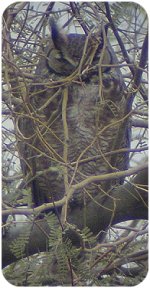
Great Horned Owl
|
Anyone who has traveled west on I-8 to San Diego has
passed through the Paloma Ranch, which encompasses much of the
Citrus Valley just west of Gila Bend. It's an oasis in the
desert, and along its western boundary is a heron/cormorant
rookery. This owl was watching over the pond, even as a pair
of Common Ravens were watching him. |
| There were comparatively few warblers,
but this one was obvious! A host of smaller birds were very
active--Verdins, Black-tailed Gnatcatchers, Ruby-crowned Kinglets
(with a flashing ruby crest), and Lincoln's Sparrows. |
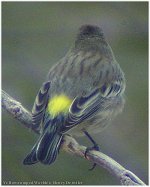
Yellow-rumped Warbler
|
|
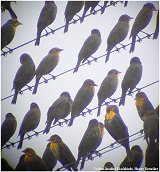
Yellow-headed Blackbirds
|
The Paloma Ranch House and pomegranite
orchard was gated, but the office and feedlot were very
active. A flock of a thousand Yellow-headed Blackbirds
swarmed around, looking for spilled grain. |
|
East of Luke Air Force Base I got this
phoebe along an irrigation canal. In a eucalyptus hedgerow I was
fortunate to see a Sharp-shinned Hawk swoop in and perch for a few
minutes. The Abert's Towhees in and under the neighboring tree seemed oblivious.
|
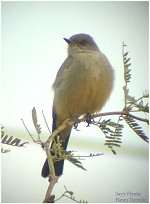
Say's Phoebe
|
|
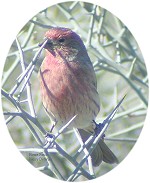
House Finch
|
During lunch on Friday I visited the pond on Mirage Road. I
walked up to the school picnic area, seeing lots of House Finches,
and then almost all the way around the pond. Least
Sandpipers and Great-tailed Grackles were my only reward.
|
|
Just as I
was approaching the cattails on the ne. end (my starting
location), a flock of 8 ground doves flew in from the
island. All but three quickly disappeared into the
grasses. This remaining trio stayed at the edge for me to
study and photograph.
|
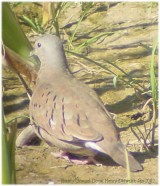
Ruddy Ground-Dove
|
|
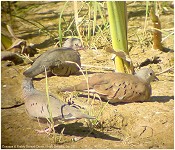
Common & Ruddy Ground-Doves
|
Just like
the one that Bob
& Paul saw in Blythe on Nov 23, this posed for
me to study it's ruddy appearance, lack of any scaling whatsoever,
uniform dark beak, and dark spots on the tertials.
|
|